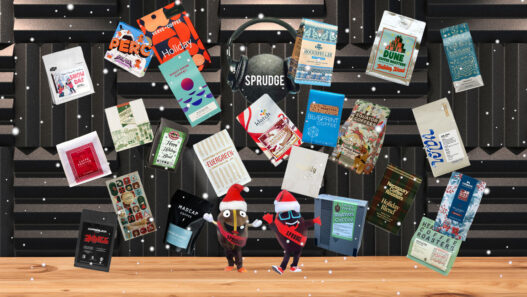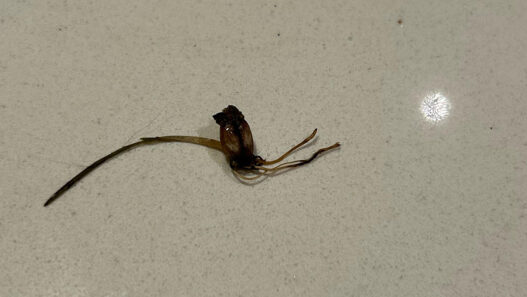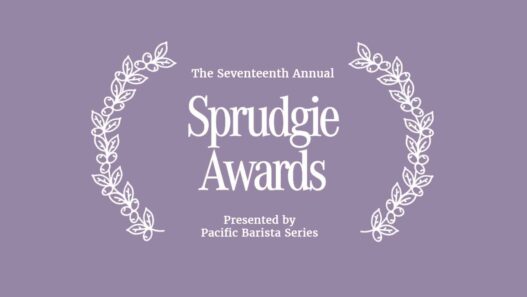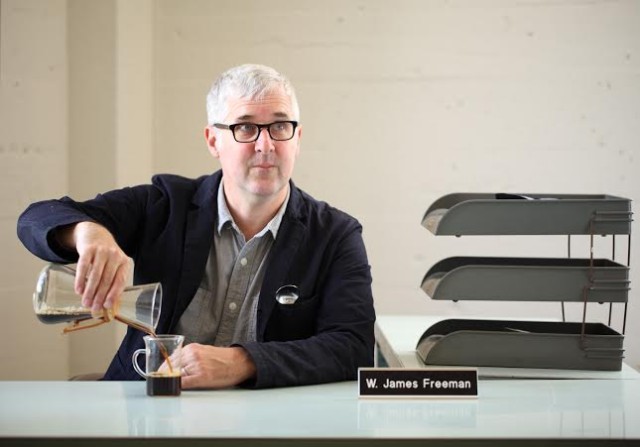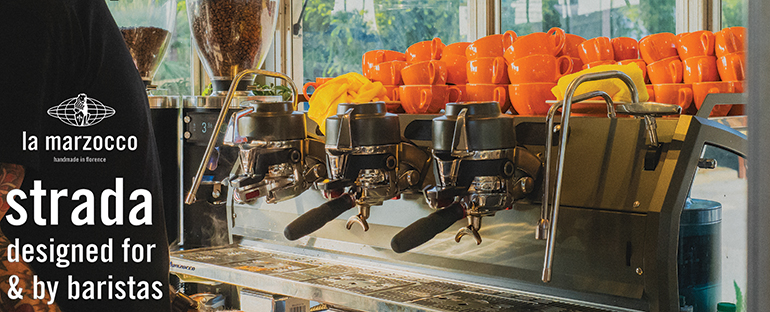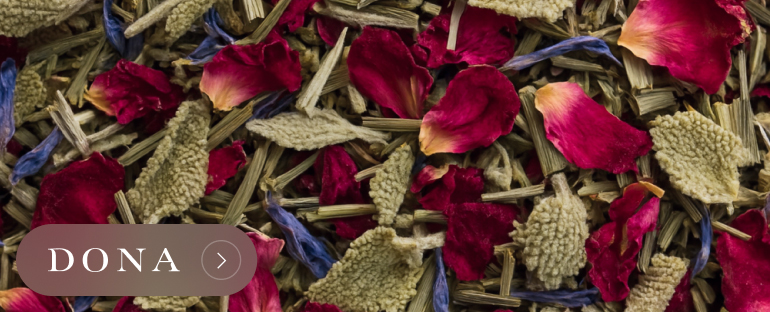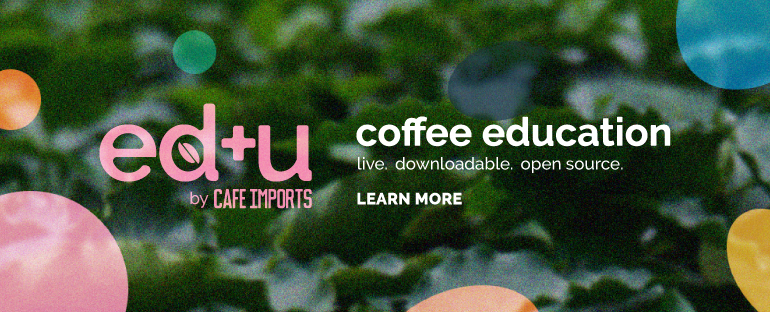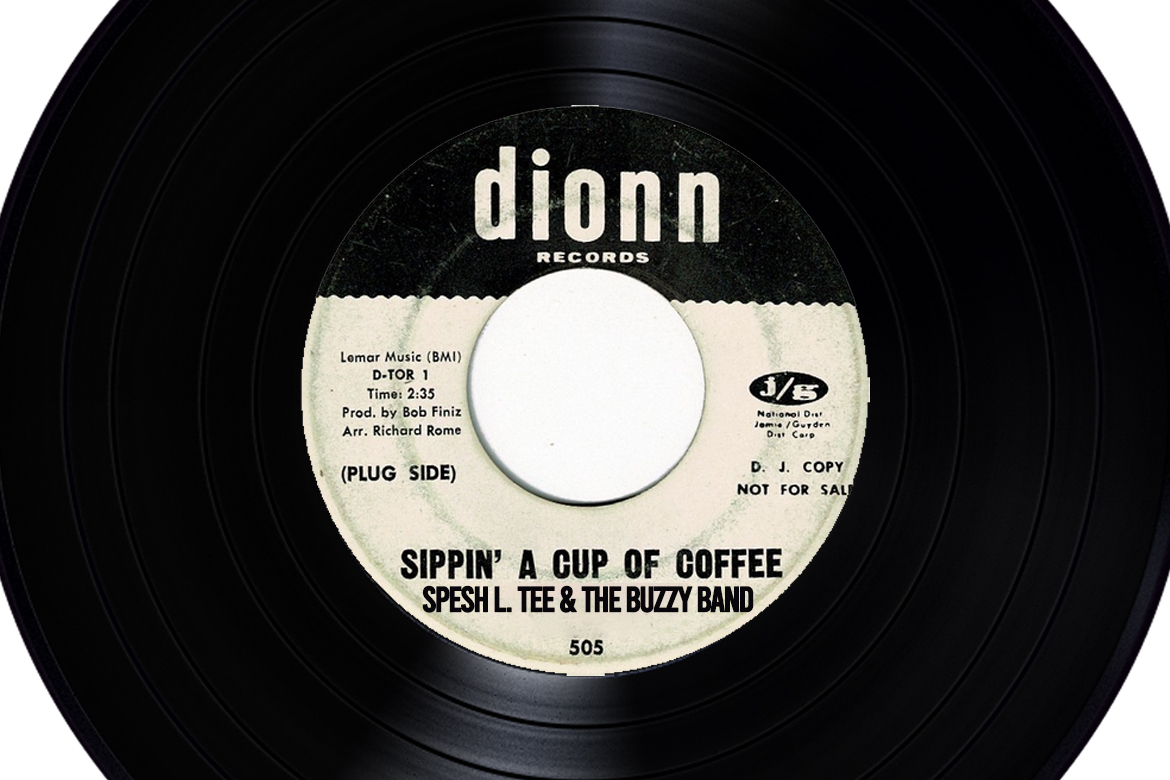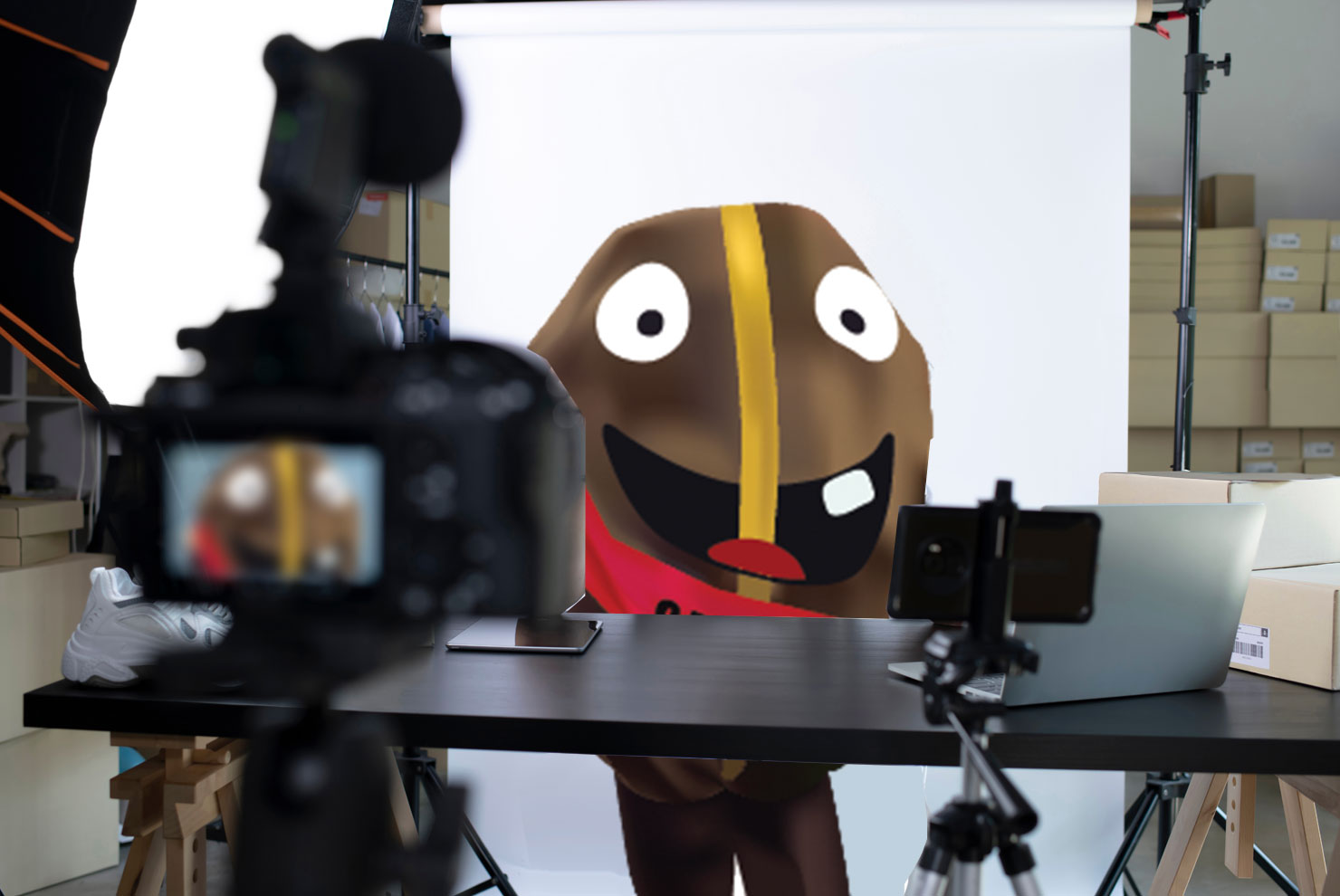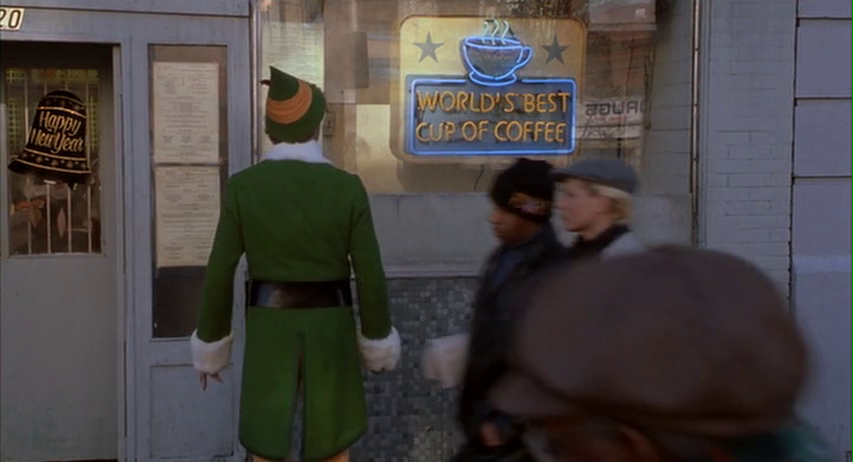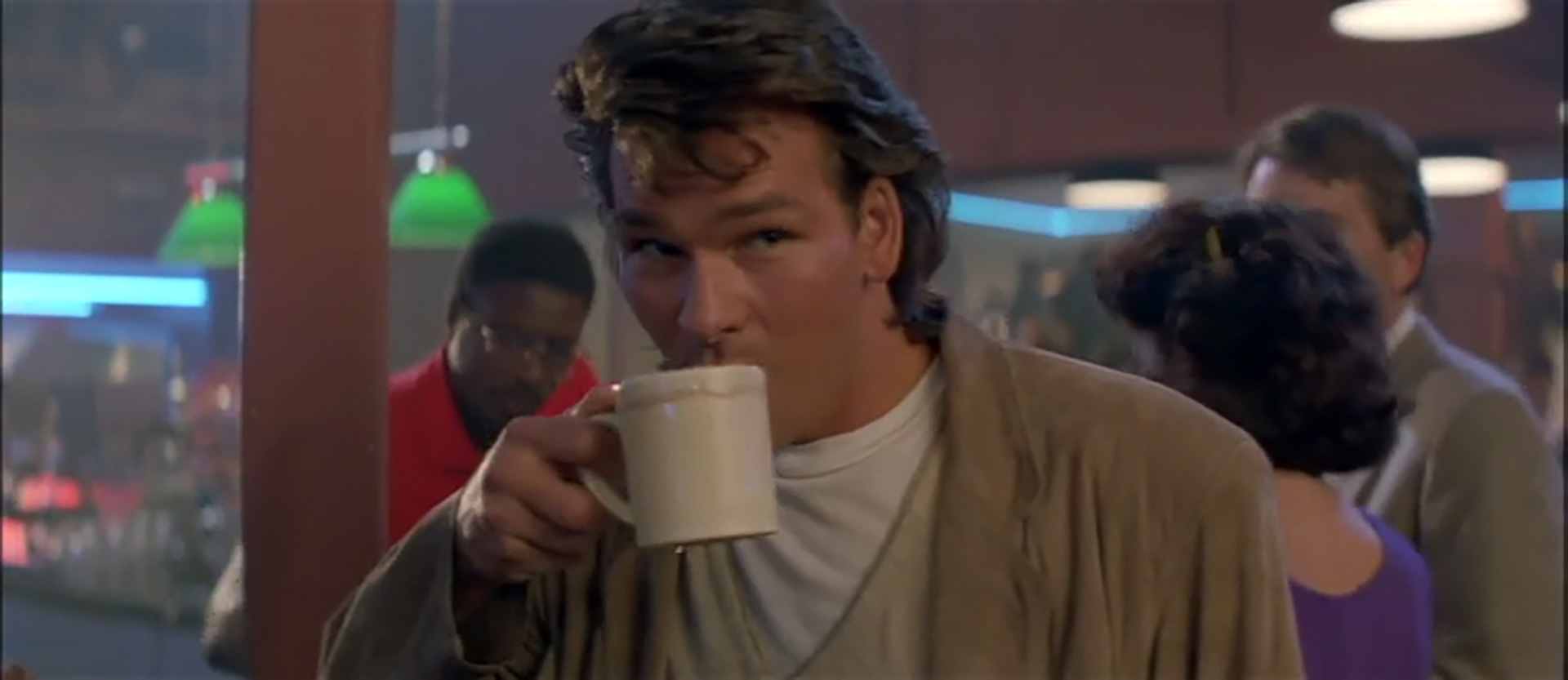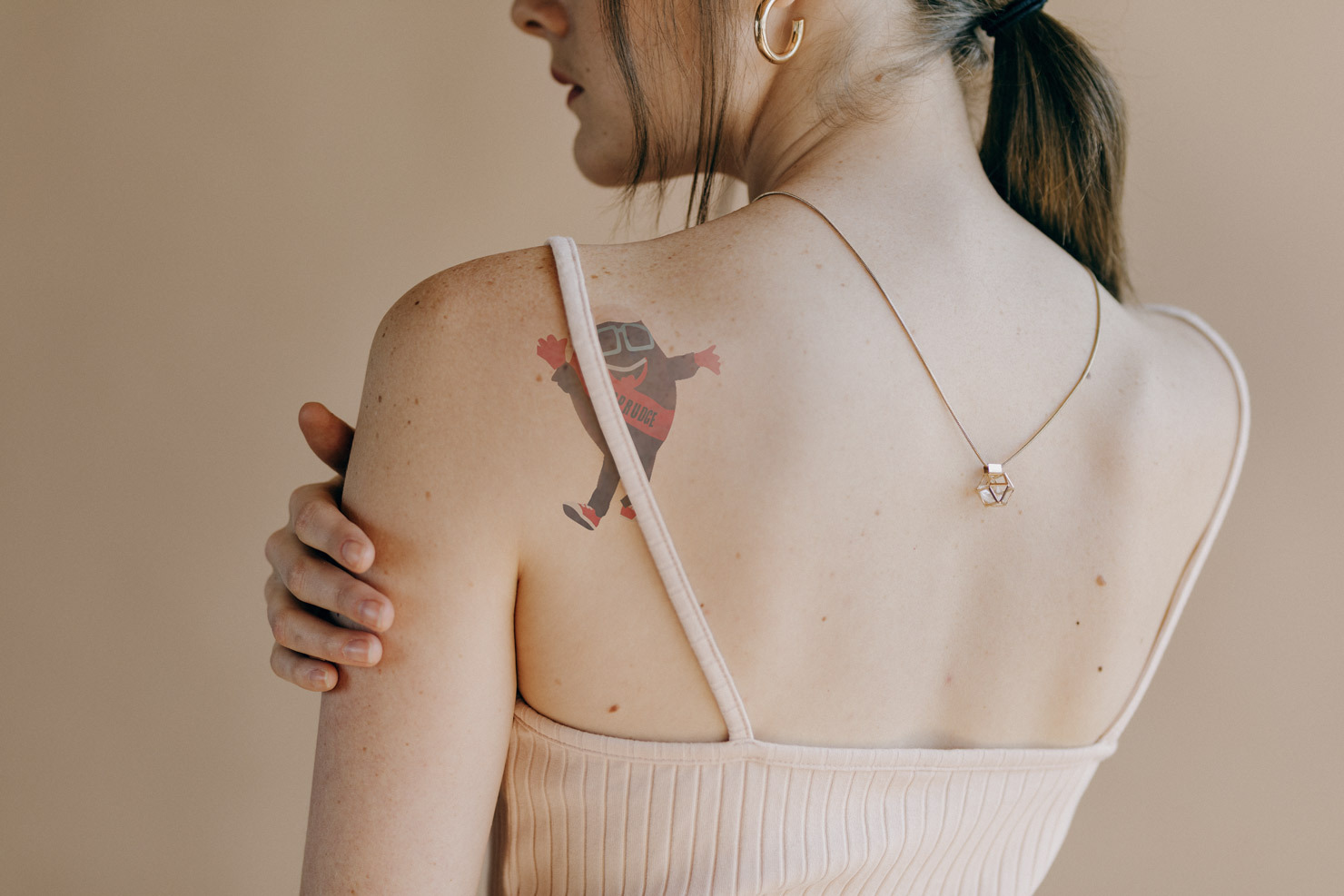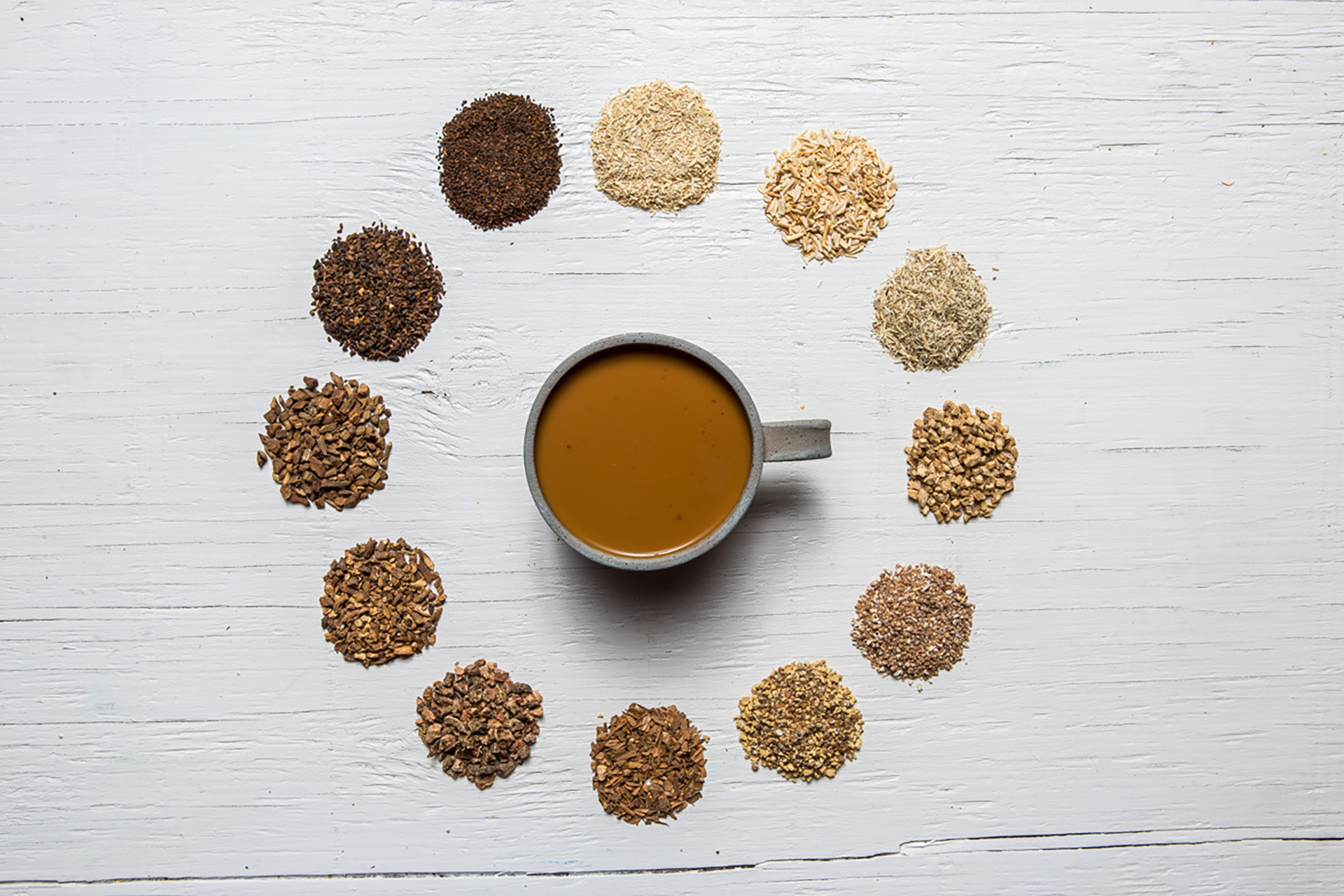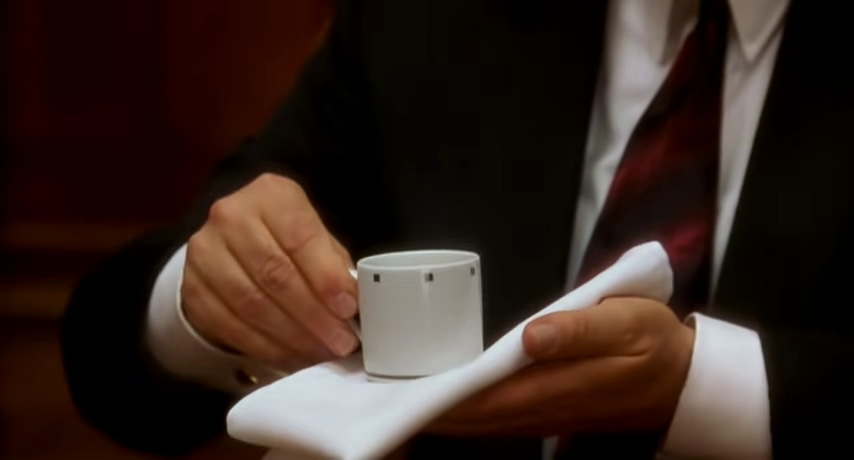It’s been a huge year so far for our friends and partners at Blue Bottle Coffee. From securing a new round of investment valued at 25.75 million dollars, to opening new cafes in Oakland and Brooklyn, to being called “The New Apple” by Slate, Blue Bottle is perched at a major moment in their company’s history. That moment now extends to Japan, as Sprudge.com is first to report Blue Bottle’s roastery and cafe expansion to that city’s Kiyosumi neighborhood, slated for late 2014.
It’s an exciting, busy time to be Blue Bottle, but the company’s founder and CEO, James Freeman, somehow made space in his schedule to sit with Sprudge for an extensive interview. We asked Freeman about expansion plans, tech, Japan, his farmers market roots, and what it’s like to play in a bigger sandbox.
Tell us all about your opening in Japan.
“We’re east of the river, in Kiyosumi–near the Kiyosumi Gardens and the MOT Museum of Contemporary Art. It’s not “glamour cool” Tokyo, more peaceful and residential, but still just a 10 minute drive from Ginza. The neighborhood reminds me of our roastery neighborhood in Oakland, a mix of residential and industry.
I like having a coffee bar in a roastery–it makes real estate a little harder, because roasteries aren’t very space efficient, but if you can find a balance then it’s worth not having tons and tons of space.
Over the years, I think many roasters have been approached with the opportunity to do licensed cafe openings in Japan, or franchised locations. For us it never felt right. Nobody loves your coffee more than you do. This is neither a joint venture nor a new license. It’s a new company, actually–Blue Bottle Japan–that’s fully owned by Blue Bottle USA. We’re spending our own money on this (which is a little scary!) but I hope people will respect it as being authentically us.
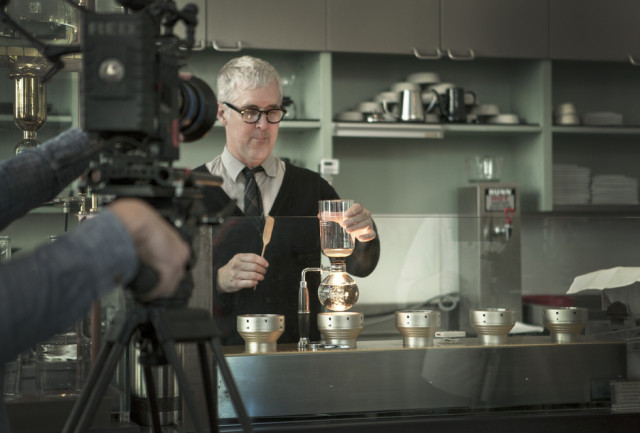
When will you open? What will the facility be like?
The physicist Niels Bohr is quoted as saying “Prediction is difficult, especially about the future.” That said, we hope to open in 2014! Japan is awesome like that. You can get a building permit in no time at all. Architects are the ones responsible for hiring contractors–they just get stuff done, and things can happen very, very quickly in Tokyo.
The building is new-ish (from the 1980s) and it’s cool because it’s in Tokyo. The thing about Tokyo is there’s no real zoning, so you wind up with stuff like 650-square-foot lots with three-story houses. The city is this crazy quilt of interesting things. The building itself is an anodyne but spacious 1980s three story warehouse, about 7000 square feet. We’ll be able to do a lot and have a lot of production. It’s a little factory.
In total, the facility will contain a training room, cupping room, roastery, offices, pastry kitchen, and a retail cafe.
To us, this sounds like phase one for a larger presence in Tokyo. One does not open a roastery simply to supply a roastery cafe…is there more in the works for new spaces in Tokyo?
We’re in negotiations for two other spots in Tokyo. It’s early still, but one spot is in Roppongi, and the other one is down near Shibuya. There’s a lot of opportunities coming on…we’ve had good luck with nice press in Japan over the years, and there’s a lot of interest in Blue Bottle.
Will your approach and menu offerings in Tokyo be similar to what you’re doing here in the States?
We’re not trying to hit a preconceived notion about what Japanese people like. The idea is for it to be like us, to feel like us, and that people in Japan will respond to that. But yes, there are some subtle differences you can expect. There might be some diminishing of portion sizes, for example, which I find thrilling…there’s a Japanese custom of smaller portions. So we’re talking about slight adjustments. On the coffee side, there might be certain lots of single origin coffees that go direct to Tokyo, and we’ll have a smaller sub-set of our blends to open.
Perhaps the biggest difference is that in Japan, we’ll be opening with a Loring SmartRoast coffee roaster, which is different from the style of roaster we use here in the USA. Our team here in the States has done a ton of QC on the Loring–we especially like it for its carbon footprint considerations, but you know, if at any point during this process we thought the machine made less delicious coffee, we could have shut the door. We’re getting very delicious coffee out of it.
The Loring stuff is culturally interesting because you know, some roasters get so bonded to a certain way, but I’m fortunate that our roasting team is open minded. They want to make great coffee and they want the tools to make it. So we’ll be opening with a Loring in Tokyo and installing one in Oakland, too, so that our roasters at both locations are speaking the same language, exchanging profiles back and forth, just like we do now with our roastery in New York City.
On the food front, my wife Caitlin [Freeman, Blue Bottle’s head pastry chef] and the food team will be working out what from the States we want to carry, and what new products we want to offer in Japan.
Have you put out a call to staff yet? Are folks from Japan going to be back and forth to Oakland, and vice versa?
There’s going to be a lot of back and forth between our staff and the United States. We’re going to send our people there, and we’ll have our new employees at Blue Bottle Japan come here. It’ll be a little more expensive–we’re getting ready to fly people out from Japan for job interviews right now–but to do things right is expensive, and it feels great to have money in the bank to do this right.
People on our staff are really psyched to be part of this, to know that they’ll have the opportunity to work in Tokyo. There’s a lot of HR implications…we want awesome Tokyo baristas to work here for a little bit, and we want baristas who’ve done a great job with our company to have a chance to work in Tokyo. I can tell you, some folks on staff here are already working hard on their Japanese!
Tokyo is such a knockout as a city. I love it so much. A decent two-bedroom apartment in Kiyosumi is only like $1000 a month, so we’ll be able to have our own toothbrushes there and the like. We want it to feel like us, you know?
James, you have a well-documented individual vision for Blue Bottle that kind of courses through the brand experience–mid-century modern flourishes, the choice of buildings like Morse or Mint Plaza for shops… so we’re wondering, how do you maintain that individual vision as you expand? How do you hold on to that?
Well I mean first of all, there’s that word “maintain”–which I think is very interesting–because when we had our first round of investment in 2012, people were kind of apprehensivley using that word “maintain” in terms of our coffee. People would ask us, “how do you maintain coffee quality as you grow? I’m really worried that you’re going to suck.”
What I realized after thinking about it is, there is no maintain. Trying to grasp on and have things stay the same is futile. What is possible is to improve–to make tangible moves to be better. That is possible. Tangible, measurable, and beneficial measures to improve–and if you don’t see that, well, then you suck.
That being said, what we did after our investment in 2012 was make some very key hires and promotions so that I can concentrate on the things that I like, and depending on who you ask, I may or may not be good at. I can concentrate on those things and do more of those things, and be less bogged down on operations things.
I try not to read too much of the internet when these things happens, but every once in a while I can’t avoid it, and you start reading about independence–this idea of “oh wow, you’ve taken this investment, and now you’re not independent.” But to be honest, I feel more independent now with an investment in our bank account than I ever did when it was just me, and pay day was every other Friday, and I had to look very carefully at the bank account to make sure everyone got paid.
August 15th, 2002 was your first day at the Oakland Farmers Market. Set the scene for us.
I sold 12 pounds of coffee! At the time it was $10 a pound, and I kind of wished it was more, and so many people were just “Peet’s Peet’s Peet’s”–is this darker than French roast? That’s when it occurred to me–I was very excited and very naive, which I guess is short-hand for uneducated–that’s when it occurred to me, oh, this might be pretty hard!
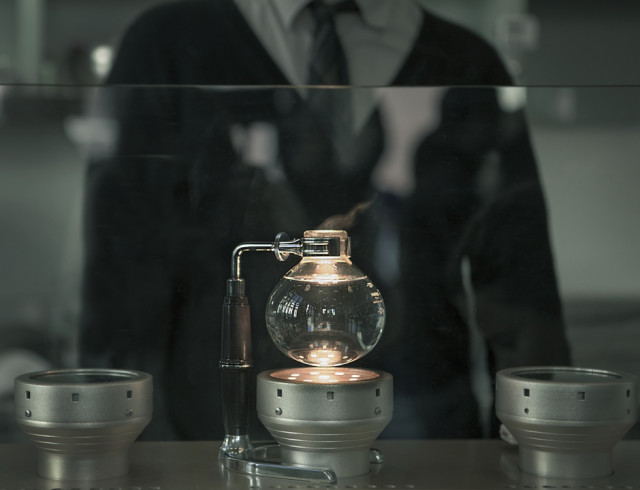
Why do you think the tech community has responded so strongly to coffee–not just as social spaces but as companies?
I have two theories.
First, one of the issues with coffee that we’ve all faced is, how do you tell someone that has been making coffee their whole adult life that what they’re making, and how they’re making it, could use a lot of improvements? That becomes like a personal thing.
In the tech community, there’s like this hacker mentality, which says that basically kind of anything you do can be improved. You take it apart and you build it better, or you code all night to figure out a better way to do this thing or that thing. So I think this idea that, “Oh, how I make my coffee can be improved–I should weigh his or measure this,” well, that is a thing that’s embraced by the tech community.
Another theory is something I was just talking about with a friend of mine in the tech community. I have a 10-year-old son named Dashiell and he has a 12 year old son named Dashiell, and so we’re friends, and anyway… he said from his old “code all night” days, coffee was their fuel. If they needed to stay up all night, or 48 hours to do that, well then they’d just drink cup after cup. It’s very much something that’s part of the tech world to keep them going.
Does investment mean we’ll see a bigger expansion of your bottled beverage program?
Yes! Thank god. It’s been so arduous and long and difficult and expensive, I can’t even believe it, but we’re set to launch that in March. It’s delicious and the R&D has been done and we’ve got a plan for a debut and a roll out and we’re super excited. I’m finally able to say we’ll debut in march at a big food trade show in Anaheim at Expo West. [Check out Eater SF for photos and more details]
So I imagine this will be a product that’ll have a home in grocery stores and retail outlets. The interesting thing about bottled coffee is that there are no instructions. You just have to open it and drink it–that’s unlike anything else in our world. So I think it can go anywhere. Why not have it be in a lot of places where people might want to buy it?
Now that you’ve taken on more investment, do you plan on expanding your wholesale partners?
We’re not like a lot of higher end coffee companies, because most of our revenue–maybe 75-80%–comes from our shop and our web store. Most other high-end companies I can think of, local or national, it’s reverse, and the primary source of revenue is from wholesale.
This wasn’t the result of a real plan. I really like shops. I like creating our own world. I honestly think nobody loves your coffee more than you do. There’s a Sisyphean quality to wholesale–ever read The Myth of Sisyphus? That’s your manual if you’re in wholesale. Especially now, when it’s getting very competitive in wholesale coffee.
I would like to grow [wholesale], but I still feel like for us it will always be a smaller, boutique arm of the greater business of what we do, which is selling coffee in our own shops.
Slate just ran an article comparing Blue Bottle and Starbucks. Do you think Starbucks make serious advances into the boutique coffee market share? We’re thinking of their new microroaster concept shop in Seattle, specifically.
20,000 shops that are a certain way is a tremendous ocean liner that’s hard to turn. That’s what people think about when they think of Starbucks. Maybe they’ll have a shop that’s a little bit different with a roaster there–they’re smart, they’ll try out all these different things, and they have a long history of opening retail stores.
But in my opinion if they’re super good at being Starbucks, they’re not going to be good at things that aren’t like Starbucks. I’m good at doing Blue Bottle stuff, but if I made a cafe that was like Starbucks, it wouldn’t be genuine. It would be premeditated and it wouldn’t be successful.
What about single-serve options like K-Cups, Starbucks Via, etc.–Starbucks is making way more money from this stuff than from any “niche” strategy.
I kind of painted myself in a corner when our book came out–I try to be above the fray and talk about things I love vs. things I don’t love, but I did have a catty little sidebar that said “A Special Place In Hell: Pod Coffee”.
If it were more delicious I could get behind it, but I’ve never had a single serve pod or an instant coffee that I thought was delicious. I just haven’t. So how do you get excited about that? Maybe it’s possible to do some sort of single serve device and it’s really delicious–and wouldn’t that be amazing?
The folks at True Ventures, one of your investors, have said: “We believe Blue Bottle Coffee is at the forefront of a ‘consumer movement’ or mega-trend in which consumers are moving to higher quality, artisanal micro-roasters of coffee, where quality, attention to detail, beauty and a distinctive experience are being sought over more mainstream alternatives.”
We think that’s right on, and that we’re seeing a consumer movement, a mega-trend. But do you see it that way as well? Are we at the dawn of something much bigger, or inching closer to hitting a wall?
I have two thoughts about that. The first one is, if you imagine the kind of olive oil or Parmigiano cheese that’s in your cupboard now, and the kind of olive oil that’s in your cupboard 10 years ago, you wouldn’t tolerate that olive oil now. Your tastes have changed. This has happened with various ingredients, and is happening with coffee too.
On the other side of that, I kind of feel lucky that I don’t spend a lot of time thinking about the industry. I hear people in coffee talk about the industry, and sometimes I feel a little left out. I don’t have sweeping pronouncements to offer, and sometimes I feel bad about that, but usually I don’t. I like to think about my shops, my bar stools, cupping, the stereos…
You asked rhetorically in your NYT “DealBook” interview, “Could we be the first 20-store chain, or 50- or 100-store chain that doesn’t suck?”—Well, could you? What does that look like?
I sort of regret that quote because it’s casting aspersions.
Sure, but could you?
Well there’s two responses–one is “maybe you suck already, James”–but the other one that’s more interesting is, I wouldn’t be excited about this if I didn’t think it was possible.
I’ve had a Shake Shack burger in the Delta terminal in JFK and it was delicious. and I think if I went to Abu Dhabi and got a Shake Shack burger it would be really delicious, too.
Did you ever think this kind of growth would happen?
No. It’s so improbable and so amazing and I feel so lucky, because I was very unhappy in my work before coffee, with so many near misses and moments of uninspiredness. This has just been so amazing…every step, every year. Getting to work with the people I work with, trying to make interesting spaces, trying to see people coming into the shops…
If you had told me at the farmers market that I would need to monitor time zones on my phone, I would have said “What??” It has been improbable and delightful and I feel so lucky. People like beginners luck. Maybe that’s why people are coming to our shops…one of the reasons, anyway.
Are you someone who likes to visit their own cafes? Do the little details drive you nuts, or can you enjoy that experience?
Yes! Today I’ve been to one, two, three of them, and soon to be four after this interview. Short answer, yes–but how can you not? It’s tricky for me in New York because I’m there every 4-6 weeks, but when I go I spend time, and there’s more feedback.
I don’t have such a sense of my own importance that I’m an ingredient for the success of these cafes. But I have things that I like to be a certain way, so if something happens, I can get to the bottom of it pretty quickly.
But I love it! So many of us are in coffee because we were such misfits everywhere else in the world, and the cafe was the one place where we didn’t feel like misfits. That’s how I got started, at least. So to be in a cafe that you had a hand in creating, and to see it busy and happy and creating good drinks, that’s an amazing feeling. I like that.
Top photo is courtesy of Clay McLachlan.




